Last month, I spent a wonderful day exploring the beautiful house and gardens of Wrest Park in Bedfordshire. This English Heritage property is the perfect place to go in the coming Spring months, so I thought I’d write a post on this fascinating property.
The House

The Wrest estate has been the family home of the de Greys for over 600 years, although the current house is much more modern. With the medieval house quite literally falling apart by the 19th century, the 2nd Earl de Grey, Thomas Robinson, knocked it down and built the impressive, French-style house that still stands today.
Sadly, the furniture no longer remains in situ, as the house has undergone many uses in recent decades. It was a convalescent home and military hospital in WWI before becoming the offices of the National Institute of Agricultural Engineering (later the Silsoe Research Institute) until it was ultimately taken into the care of English Heritage in 2006. Inside the house, a few rooms are used to tell the tale of the uses of the house over time, and the pictures of research stations in the library definitely pained the historian in me!

Although the furniture no longer remains, the interior of the house is still a wonder to behold. Gorgeous wallpaper and ceiling paintings give each room an independent character and gives a taste of how elegant the house would have looked at the peak of its existence. The shelves are filled with dusty books – although these aren’t original and were actually purchased from auction by English Heritage to fill the shelves – and give the rooms a sophisticated atmosphere. One of my favourite spaces was the indoor conservatory, with plants climbing the walls and reaching for the sunlight. It looks like such a peaceful space.
The Gardens

The first significant feature of the gardens was the introduction of the symmetrical, formal woodlands by Henry, Duke of Kent, in the early 17th century. With the help of garden designers and architects, Henry created the beautiful woodland gardens, complete with various avenues and ornaments designed to draw those admiring the gardens onwards. These focal points (placed at crossroads or the end of long avenues) make wandering out the garden a great adventure, with every twist and turn revealing the secrets of the estate’s past.
Under Henry’s careful eye, one of his architects – Thomas Archer – constructed the mesmerising baroque pavilion between 1709-1711. Keen explorers will stare in awe at the Great Room inside, featuring a domed ceiling with wall-paintings by Mark Anthony Hauduroy. With Trompe l’œil styled painting (which makes use of clever techniques to make the painting appear 3D), the Great Room really lives up to its name. Those looking for even more adventure can follow the four winding staircases up into small rooms with rounded window, looking out over the grounds.

When the Duke died, his granddaughter, Marchioness Jemima Grey, inherited Wrest Park. She was also keen to make a mark on the gardens, employing Lancelot ‘Capability’ Brown and all his landscaping prowess, to whom there is a dedicated column in the grounds. Jemima is also responsible for some of the other curious quirks around the grounds, including a delightful Chinese temple and bridge as well as a bathhouse folly, which looks like something straight from a fairytale.
A Day Out…
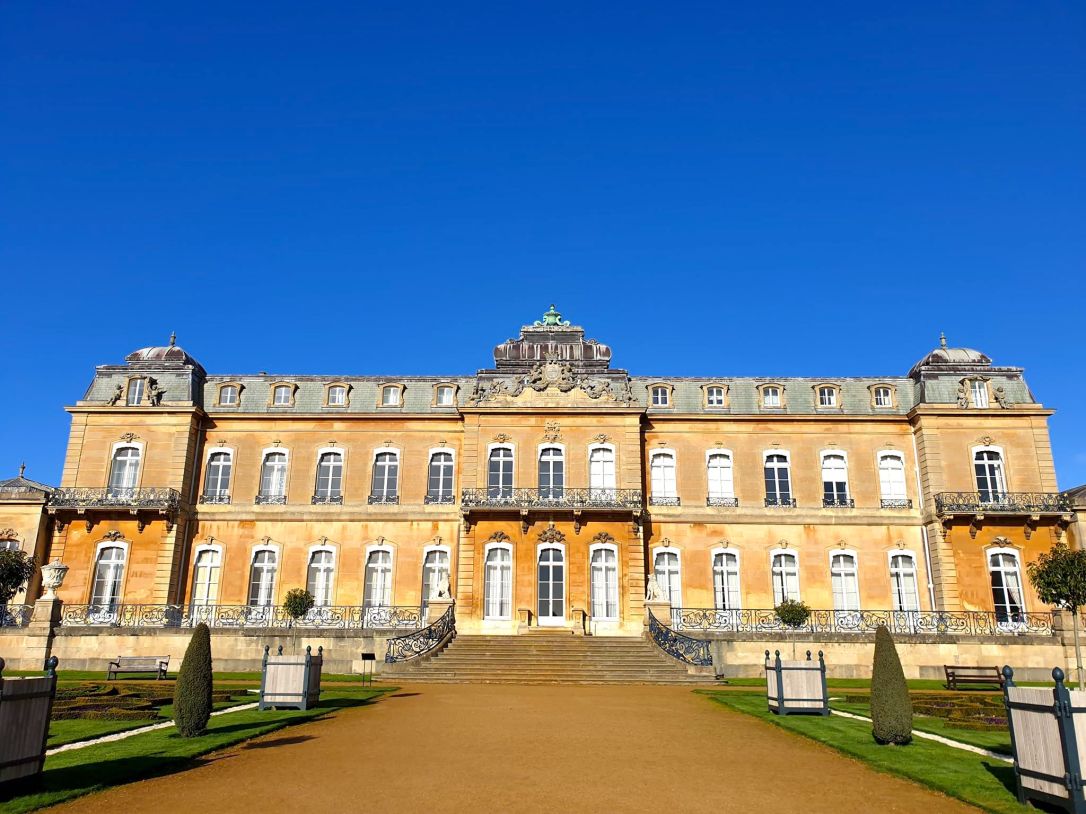
Wrest Park made for a perfect day out. The gardens are endless and exploring those alone could well take a day. When the sun is shining, Wrest Park is a fascinating and beautiful place to visit.




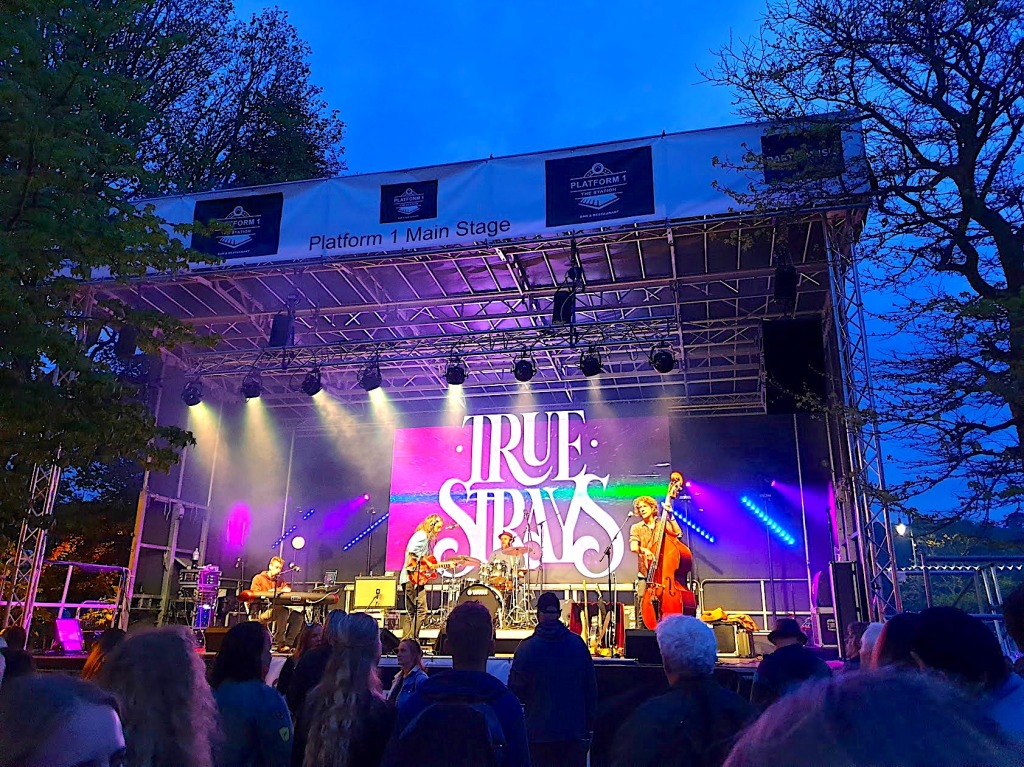




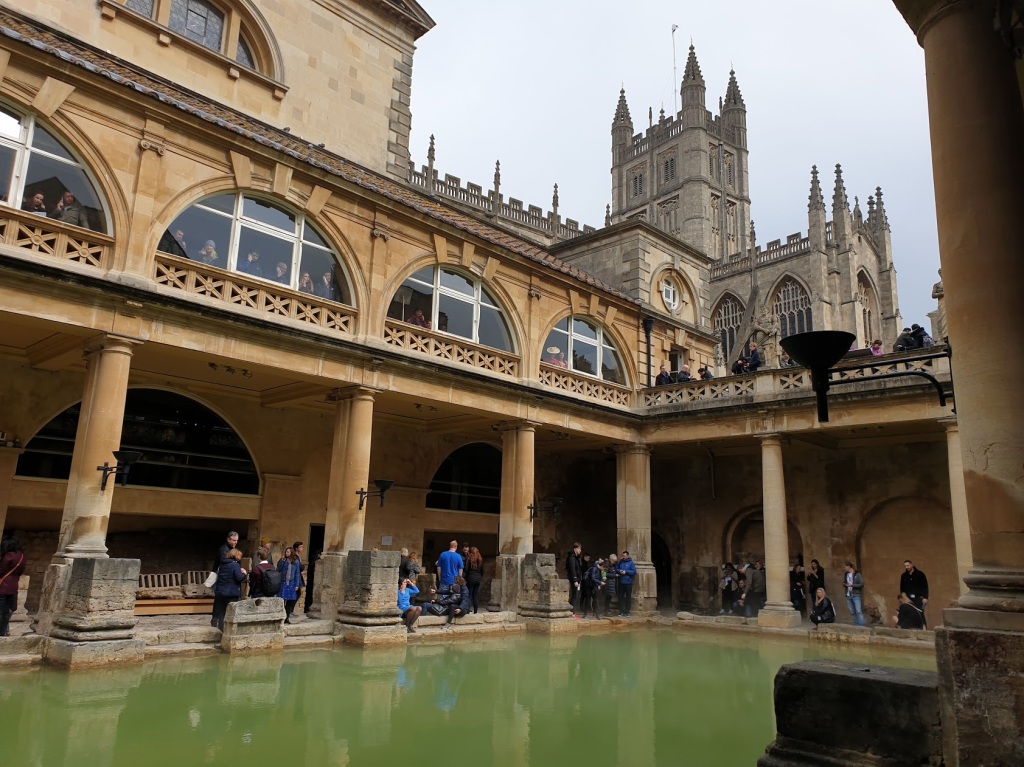



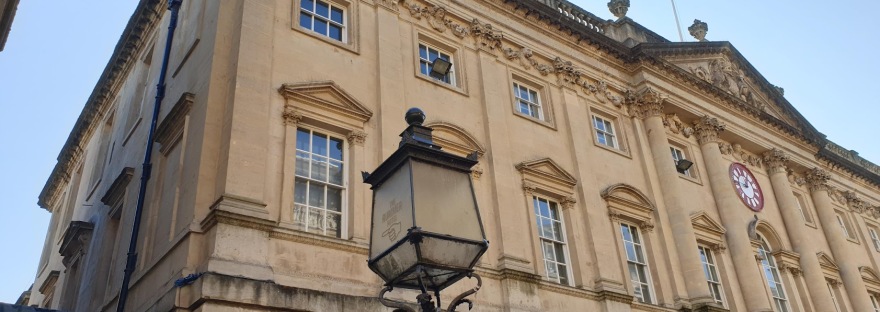
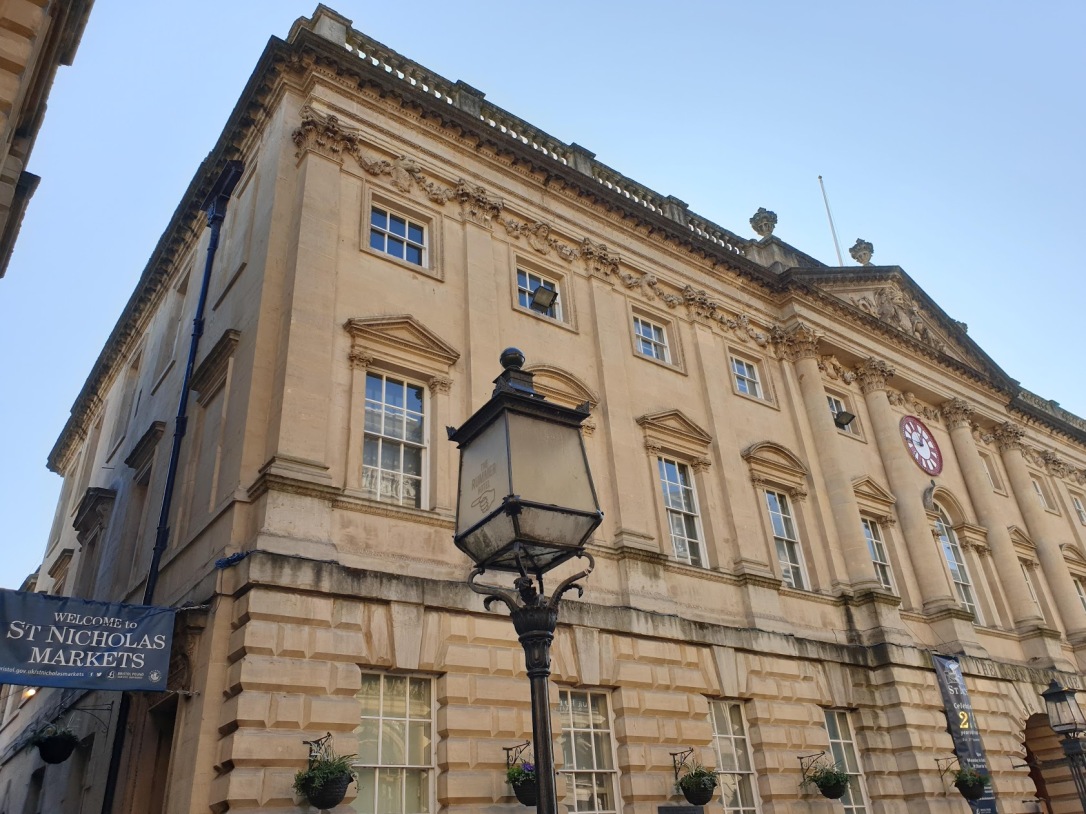


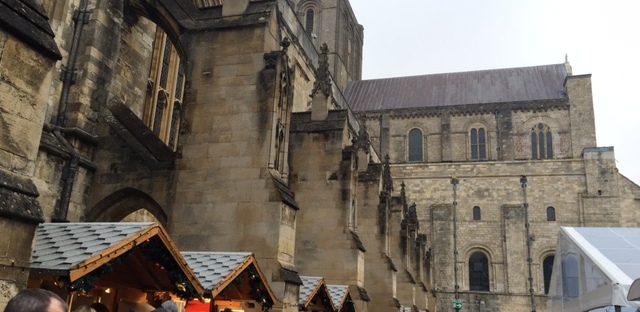
 With Christmas just around the corner, I’ve started a new series,
With Christmas just around the corner, I’ve started a new series, 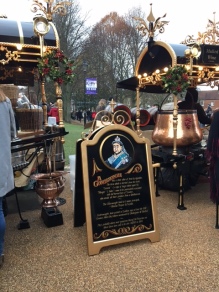
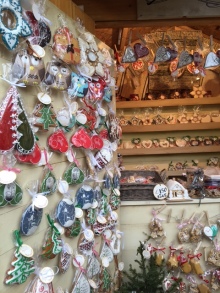 There are plenty of stalls. From gingerbread, scarves and decorations to honey, chilli sauce and art, there is a huge variety. Be warned, much of it can be classed as typically reproduced and perhaps not as unique as you might desire. I actually didn’t buy anything except for food (duh) so that might speak volumes as I love a good market. There are homemade goods though and different items that are bound to appeal to various personalities so it is a cute day out.
There are plenty of stalls. From gingerbread, scarves and decorations to honey, chilli sauce and art, there is a huge variety. Be warned, much of it can be classed as typically reproduced and perhaps not as unique as you might desire. I actually didn’t buy anything except for food (duh) so that might speak volumes as I love a good market. There are homemade goods though and different items that are bound to appeal to various personalities so it is a cute day out. What I really want to rave about is the selection of food on offer. I queued for lunch at a French cheese/sausage specialising stall. An incredible baguette with sausage drowned in raclette cheese had my name on it and I was not disappointed at all. Definitely worth the wait! I also bought a cup of churros- Spanish doughnuts- which were nice but underwhelming in comparison to ones I’ve devoured elsewhere.
What I really want to rave about is the selection of food on offer. I queued for lunch at a French cheese/sausage specialising stall. An incredible baguette with sausage drowned in raclette cheese had my name on it and I was not disappointed at all. Definitely worth the wait! I also bought a cup of churros- Spanish doughnuts- which were nice but underwhelming in comparison to ones I’ve devoured elsewhere.
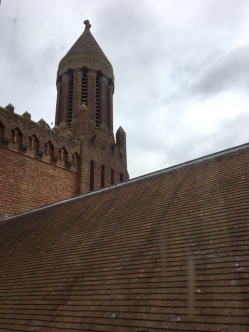 For the last three weeks, I’ve been staying in the Catholic Benedictine Abbey of Quarr on the Isle of Wight. The purpose for this slightly bizarre choice of accommodation was due to an archaeology excavation I was participating in on the ruins of the medieval Quarr Abbey (which I will discuss at length in a future post).
For the last three weeks, I’ve been staying in the Catholic Benedictine Abbey of Quarr on the Isle of Wight. The purpose for this slightly bizarre choice of accommodation was due to an archaeology excavation I was participating in on the ruins of the medieval Quarr Abbey (which I will discuss at length in a future post).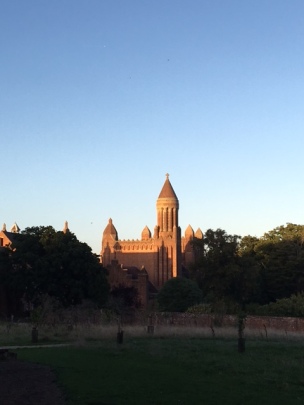 The public is allowed to stay in the Abbey accommodation free of charge, in return for a small donation or assistance in daily chores. Be warned though; the rooms are rather lofty and empty, creating an eerie atmosphere. Not for the faint-hearted! The loud bells also make for a broken nights sleep so is not the best place if you’re looking for some good rest.
The public is allowed to stay in the Abbey accommodation free of charge, in return for a small donation or assistance in daily chores. Be warned though; the rooms are rather lofty and empty, creating an eerie atmosphere. Not for the faint-hearted! The loud bells also make for a broken nights sleep so is not the best place if you’re looking for some good rest. The grounds of the Abbey are beautiful. The inner courtyard is stunning and the areas open to the public are equally attractive and lovely to walk around. A private beach to the North of the Abbey, down gorgeous woodland paths, is the perfect spot to relax and watch the sunset or visit the tea shop in the grounds to grab a cream tea. All in all, it is definitely an interesting place to visit if you’re near Fishbourne on the Isle of Wight but it is not the most attractive of buildings!
The grounds of the Abbey are beautiful. The inner courtyard is stunning and the areas open to the public are equally attractive and lovely to walk around. A private beach to the North of the Abbey, down gorgeous woodland paths, is the perfect spot to relax and watch the sunset or visit the tea shop in the grounds to grab a cream tea. All in all, it is definitely an interesting place to visit if you’re near Fishbourne on the Isle of Wight but it is not the most attractive of buildings!
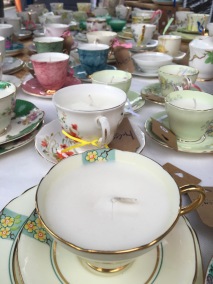



 Nymans is a fabulous National Trust property located in West Sussex. This gorgeous, largely ruined, house sits in acres of beautifully designed gardens and is a lovely place to visit for a relaxing excursion. Last evening however, I visited Nymans for an outdoor theatre production of William Shakespeare’s Much Ado About Nothing by The Lord Chamberlain’s Men. Opening an hour early for picnics, it was a wonderful event.
Nymans is a fabulous National Trust property located in West Sussex. This gorgeous, largely ruined, house sits in acres of beautifully designed gardens and is a lovely place to visit for a relaxing excursion. Last evening however, I visited Nymans for an outdoor theatre production of William Shakespeare’s Much Ado About Nothing by The Lord Chamberlain’s Men. Opening an hour early for picnics, it was a wonderful event. In short, Much Ado About Nothing focuses on gossip and the manifestation of what one overhears and believes. One couple, Claudio and Hero, are brought together through deception and disguise, with Don Pedro wooing Hero on behalf of his friend Claudio. Similarly, Benedick and Beatrice fall in love through both overhearing that the other feels affectionately for them. Alongside various other plot twists and gossip, the story is full of excitement and deception and all in all is thoroughly entertaining.
In short, Much Ado About Nothing focuses on gossip and the manifestation of what one overhears and believes. One couple, Claudio and Hero, are brought together through deception and disguise, with Don Pedro wooing Hero on behalf of his friend Claudio. Similarly, Benedick and Beatrice fall in love through both overhearing that the other feels affectionately for them. Alongside various other plot twists and gossip, the story is full of excitement and deception and all in all is thoroughly entertaining.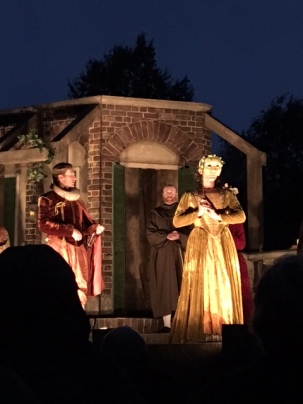 Alongside a great set, the cast were superb. My particular favourites were Jordan Bernarde, portraying Benedick, and Oliver Buckner who played Beatrice. Whilst both actors worked fabulously together in their witty and conflicting relationship, individually they were also excellent. Bernarde delivered hilarious lines with gusto and cheer, encouraging the audience to revel in his frivolity and delight in eagerly listening to his every line, whilst Buckner suited the role of a woman almost disconcertingly well and was equally talented. He expertly demonstrated the wit and sophistication of his character whilst retaining the perfect female charm and demeanour. It was authentic to see the female characters played by males, as was the case in the time of Shakespeare, so that was a nice feature. In addition to the outstanding talent of Bernarde and Buckner, Jon Tozzi did justice to the role of Hero and had fantastic hair for fashioning into feminine and masculine styles!
Alongside a great set, the cast were superb. My particular favourites were Jordan Bernarde, portraying Benedick, and Oliver Buckner who played Beatrice. Whilst both actors worked fabulously together in their witty and conflicting relationship, individually they were also excellent. Bernarde delivered hilarious lines with gusto and cheer, encouraging the audience to revel in his frivolity and delight in eagerly listening to his every line, whilst Buckner suited the role of a woman almost disconcertingly well and was equally talented. He expertly demonstrated the wit and sophistication of his character whilst retaining the perfect female charm and demeanour. It was authentic to see the female characters played by males, as was the case in the time of Shakespeare, so that was a nice feature. In addition to the outstanding talent of Bernarde and Buckner, Jon Tozzi did justice to the role of Hero and had fantastic hair for fashioning into feminine and masculine styles!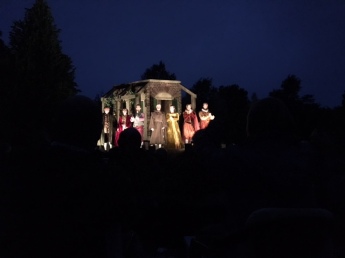 I truly have nothing but praise for this performance. The occasional songs were bright and merry (also very catchy- I’ve been singing ‘toss the pot, toss the pot, let us be merry’ on repeat in my head ever since!) and created an uplifting and light atmosphere alongside the twists and turns of the plot. The whole performance was delightfully entertaining, hilariously witty and fantastically directed from start to finish. If rain at an outdoor theatre event can’t ruin your evening, you know the actors were truly on form.
I truly have nothing but praise for this performance. The occasional songs were bright and merry (also very catchy- I’ve been singing ‘toss the pot, toss the pot, let us be merry’ on repeat in my head ever since!) and created an uplifting and light atmosphere alongside the twists and turns of the plot. The whole performance was delightfully entertaining, hilariously witty and fantastically directed from start to finish. If rain at an outdoor theatre event can’t ruin your evening, you know the actors were truly on form.
 For some, the uncensored sexual scenes were too much. People described this series to me as the ‘explicit, raunchy one’, with unsuspecting viewers turning it on to see people turning on each other! Personally I didn’t find these scenes to be excessive, I think they add an additional layer of passion and thickens the plot, but some were put off.
For some, the uncensored sexual scenes were too much. People described this series to me as the ‘explicit, raunchy one’, with unsuspecting viewers turning it on to see people turning on each other! Personally I didn’t find these scenes to be excessive, I think they add an additional layer of passion and thickens the plot, but some were put off.
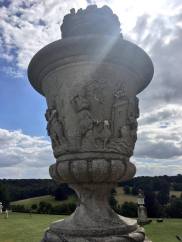 for Queen Elizabeth the Queen Mother’s honeymoon and the permanent residence of Margaret Greville, a famous 19th-20th-century hostess, the house is certainly grand. Located in Surrey, it is a wonderful National Trust property to visit for a day out or, like me, an afternoon escape.
for Queen Elizabeth the Queen Mother’s honeymoon and the permanent residence of Margaret Greville, a famous 19th-20th-century hostess, the house is certainly grand. Located in Surrey, it is a wonderful National Trust property to visit for a day out or, like me, an afternoon escape.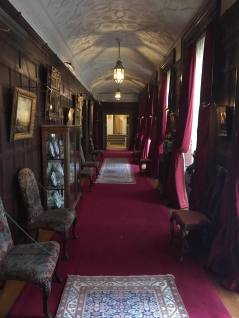 The house itself, as previously touched upon, is magnificent. The bright yellow exterior adds a friendly feel upon arrival and the rooms are grand yet cosy. I enjoyed the entrance hallway; beautiful wooden balconies glance down at you from the higher levels as a chandelier sparkles around the room and tells you that you’re entering a luxurious home. The dark red carpet and draped curtains were a particular favourite of mine. They’re so seductive and give you a glimpse into the exclusive and elite culture that danced through these rooms merely one hundred years ago. There’s certainly something magical about it.
The house itself, as previously touched upon, is magnificent. The bright yellow exterior adds a friendly feel upon arrival and the rooms are grand yet cosy. I enjoyed the entrance hallway; beautiful wooden balconies glance down at you from the higher levels as a chandelier sparkles around the room and tells you that you’re entering a luxurious home. The dark red carpet and draped curtains were a particular favourite of mine. They’re so seductive and give you a glimpse into the exclusive and elite culture that danced through these rooms merely one hundred years ago. There’s certainly something magical about it. Glorious paintings adorn the walls, lacing every hallway and room with an air of sophistication, whilst individual and unique features in each section of the house lends to a whole and exciting viewpoint of the estate over the years. The use of it in the world wars, for example, as a convalescent home is particularly interesting, certainly to me as a historian but also to anyone, at highlighting the shift in these luxury estates from private houses to important places of rest and recuperation in the war effort. It’s fascinating how these elite members of society switched from having their private quarters and sophisticated lifestyle to providing aid and comfort to unfortunate soldiers. It’s glorious!
Glorious paintings adorn the walls, lacing every hallway and room with an air of sophistication, whilst individual and unique features in each section of the house lends to a whole and exciting viewpoint of the estate over the years. The use of it in the world wars, for example, as a convalescent home is particularly interesting, certainly to me as a historian but also to anyone, at highlighting the shift in these luxury estates from private houses to important places of rest and recuperation in the war effort. It’s fascinating how these elite members of society switched from having their private quarters and sophisticated lifestyle to providing aid and comfort to unfortunate soldiers. It’s glorious! Libraries are my favourite room in any old house or castle. The library and study at Polesden Lacey don’t compare to that at Arundel Castle, which is spread across two rooms and features upper balconies, but it is very pleasant. Light and airy, I can imagine comfortable sitting at the desk and glancing out the window over the extensive landscape to gain inspiration. In fact, I went to Polesden Lacey to sit in the grounds and do some writing so I can confirm that it’s very relaxing and inspirational to look over the beautiful countryside! The Gold Room is also exquisite and, as the name suggests, lined completely with gold. It’s spectacular and worth seeing.
Libraries are my favourite room in any old house or castle. The library and study at Polesden Lacey don’t compare to that at Arundel Castle, which is spread across two rooms and features upper balconies, but it is very pleasant. Light and airy, I can imagine comfortable sitting at the desk and glancing out the window over the extensive landscape to gain inspiration. In fact, I went to Polesden Lacey to sit in the grounds and do some writing so I can confirm that it’s very relaxing and inspirational to look over the beautiful countryside! The Gold Room is also exquisite and, as the name suggests, lined completely with gold. It’s spectacular and worth seeing.